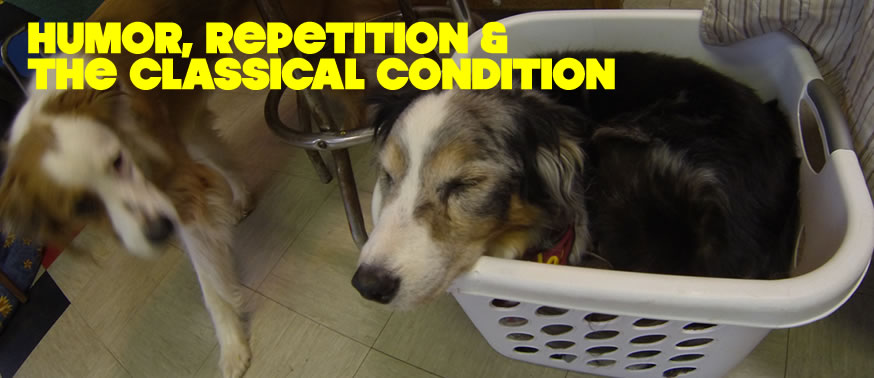
Humor, Repetition and the Classical Condition
Yesterday, I did a piece on Reframing the Dog’s Understanding of the Door. A couple of the comments pointed out some gaps in the one ‘how to’ paragraph. That paragraph was not meant as a lesson plan, it was just a quick hit explanation of the technique. Today’s installment is also not meant as a lesson plan. This piece is about some concepts we can use to desensitize our dog to the classical condition.
Pavlovian Humor – Make Their Drive a Joke
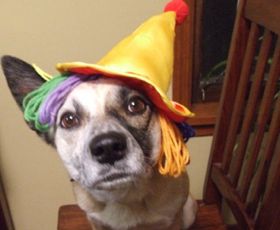
Humor is essentially taking people down a common path and popping them out into an unexpected destination:
“Three guys walk into a bar…”
The listener knows what’s coming: a long drawn out story about a minister, a priest and a rabbi, or something like that. Eyes roll,”Oh no, not another one… this is going to take a while.” We are already on that path when we hear,”Three Guys walk…”.
But when the punchline is delivered in the same sentence, we are yanked off the path and plopped down somewhere else entirely. Three Guys walk into a bar… and the other one ducks.” buh-dum-bum-tss! It’s funny because it’s unexpected and the expectation of a long drawn out story is not fulfilled. There is a disconnect.
Dogs have a similar understanding about certain situations. “The handler gets the leash.”
The dog is already taking the handler out for a drag, even though the handler has yet to put his or her shoes on. Tail wags, dog runs to the door; they know what’s coming, they know the path and are already on it. But when the handler leashes the dog up and does attention in the kitchen, the dog is yanked off the path and plopped down somewhere else entirely. “Huh?” Disconnect.
This is Pavlovian Humor and it desensitizes the classical condition. The leash drill mentioned above is one we prescribe for all of our clients specifically to reframe the dogs understanding of leash as tool for restraint to leash as tool for work and to change the path that leads to the classically conditioned state. Leash=Go For a Walk.
Groundhog’s Day – Repetition for Success
For the longest time here at Pawsitive Vybe, we’d work dogs on the way in to the studio for class, deal with their over threshold shenanigans, get them dialed in for work, only to repeat the process next week with little to no decrease in arousal by the dog.
Here’s a quick rundown of a sample approach to Class (If you don’t understand all this, don’t sweat it, it’s a PVybe thing packed with PVybe Lingo, but if you’ve been working dogs for a while, odds are you get the gist, and the gist is all we’re concerned with here.):
Handler arrives to our property with cookies tossed into the crate to keep the dog eating cookies and not freaking in the crate. Handler sets tone with dog in the crate with eye contact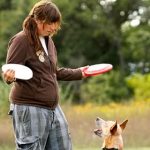 Unsolicited eye contact or Attention is a great way to hook up with a dog. If you have something the dog wants he should give eye contact in order to get access to... More. Opens crate and leashes dog then works eye contact in the car. Releases dog as reinforcement for eye contact after the dog is focused on handler instead of the environment and marks the dog as he or she crosses the threshold. Dog reorients to get cookies and handler funnels that into Attention/Unsolicited eye contact. Then handler Red Light Green Lights it to the studio and does eye contact at the door. Dog goes in and does table or spot
Unsolicited eye contact or Attention is a great way to hook up with a dog. If you have something the dog wants he should give eye contact in order to get access to... More. Opens crate and leashes dog then works eye contact in the car. Releases dog as reinforcement for eye contact after the dog is focused on handler instead of the environment and marks the dog as he or she crosses the threshold. Dog reorients to get cookies and handler funnels that into Attention/Unsolicited eye contact. Then handler Red Light Green Lights it to the studio and does eye contact at the door. Dog goes in and does table or spot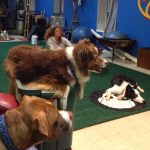 Spot is a “go to a place”, or “go to a mat” behavior. This means that the dog seeks out and performs a duration behavior on a spot of the handler’s choosing. A... More for cookies.
Spot is a “go to a place”, or “go to a mat” behavior. This means that the dog seeks out and performs a duration behavior on a spot of the handler’s choosing. A... More for cookies.
About a year ago we got smart and started to do several reps of the walking into the studio behavior. In fact, the class for a week or two, focused nearly entirely on repeating the approach to class and actually wound up desensitizing the troublesome behavior. So instead of just practicing the above approach from the car into class one time per session, it was done 5 times.
Sure enough, the dog started to get the routine. There is a let down in expectation; a bit of Pavlovian Humor in there as well. “A dog goes to class… then winds up back in the crate.” Like the movie GroundHog’s Day, the dog gets to practice the behavior repetitively in order to get it right.
Pretty soon the dog’s expectation of immediately getting to class is broken and the dog starts to focus on what works in the now, instead of in the future. They are given plenty of opportunity to gain reinforcement through these repetitions and have no clue whether or not the approach will even lead to class. (Sometimes we have handlers drop by to get their dogs out and go to the door of the studio and then leave. The ultimate in Pavlovian Humor.)
We have our clients do this with car rides. Going to the mailbox to drop a letter off? Take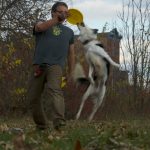 A Take is a cued Bite that replicates the placement and timing of a throw. Usually used with overs, vaults, and flips, the Take is a powerful teaching tool for creating habitual leaping... More the dog. Do your getting out of the car ritual. Walk to the mailbox or around the car then get back in and go. Dog says,”Huh?” Many reps of this will help desensitize the dog to the idea that Car Ride=AWESOME!. It’s not hard to teach the dog that Car Ride=Lame,”Probably just going to go out and walk around the car or something… Big Deal!”
A Take is a cued Bite that replicates the placement and timing of a throw. Usually used with overs, vaults, and flips, the Take is a powerful teaching tool for creating habitual leaping... More the dog. Do your getting out of the car ritual. Walk to the mailbox or around the car then get back in and go. Dog says,”Huh?” Many reps of this will help desensitize the dog to the idea that Car Ride=AWESOME!. It’s not hard to teach the dog that Car Ride=Lame,”Probably just going to go out and walk around the car or something… Big Deal!”
Repetition and Pavlovian Humor
These techniques can be expanded to include any number of situations where the dog’s classical condition runs away with them and drives us handlers bonkers.
- Prepare
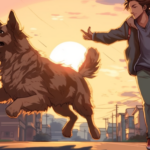 In the Play+ philosophy, "Prep" or Prepare is the 2nd stage of "Next" in a Cycle of Play. It's the moment where the handler readies themselves to become an opportunity for the dog.... More your dog’s food then put it away only to feed them later. Perhaps when they do a really nice behavior you’ve been wanting to capture.
In the Play+ philosophy, "Prep" or Prepare is the 2nd stage of "Next" in a Cycle of Play. It's the moment where the handler readies themselves to become an opportunity for the dog.... More your dog’s food then put it away only to feed them later. Perhaps when they do a really nice behavior you’ve been wanting to capture. - Leash your dog do eye contact in the kitchen. Take the leash off then go watch a movie.
- Get prepared to walk outside the door for a jam session or walk. Get them out cleanly and calmly then go back inside and make a sandwich.
- Reward them for only Dropping or walking over discs.
If you are getting good behavior and that behavior always leads to a romp in the backyard, or a nice long walk, your ritual is liable to predict and promote the classically conditioned state of the activity you do after that ritual. Your attempt at calm, good solid behavior can and does trigger that craziness you are trying to avoid.
By giving the dog some unexpected consequences, Pavlovian Humor and Groundhog’s day, you can and will lower your dog’s state of arousal in those situations.





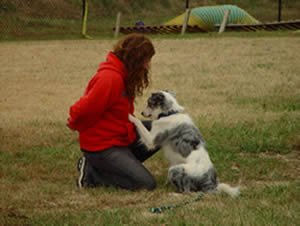

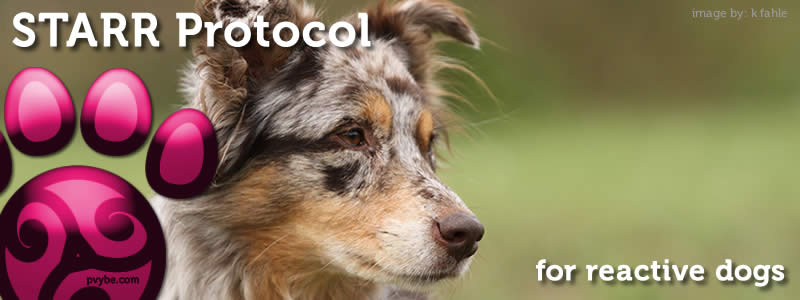
I have to say, this is some really great information. Pavlovian humor…gotta love it…
My dog rarely gets overly aroused, however she does get overstimulated on a regular bases in the car- she sticks her head out the window or beside it, when I ask for her attention she makes eye contact with me for a second but then she goes back to the window as if it is all that mattered in the world. She often keeps her tail between her legs during car rides and licks her lips a lot, too. I’ve given attempts at desensitizing her to the car, but have made little progress. This article has really pushed me to help her break free from this.
thanks
Feed her her dinner in the car for a few days. Then feed her with the car on.
Should help quite a bit and really helps to change the meaning of getting into the car.
Hat tip to Greg Tresan for that awesome nugget.
Peace
Awesome article! Thank you very much for sharing. The tips on working with the high-drive crazies we call dogs will definitely come in handy.